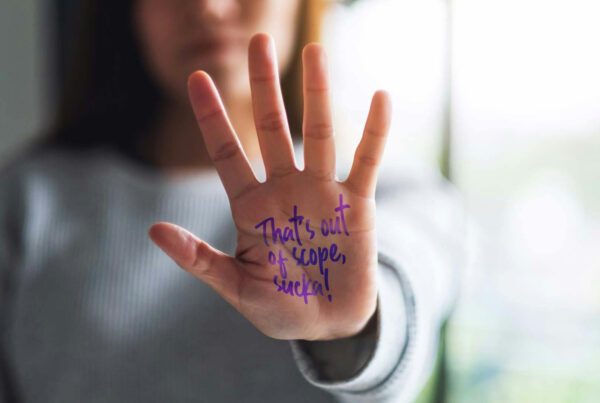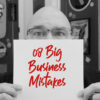Your very first interaction with a potential client should be a general conversation to qualify the opportunity. Is the project a good fit for you? Are you a good fit for the project? If you deem the opportunity as viable, the next step in your sales process should be a discovery meeting.
The objectives of the discovery meeting are to clearly understand the problem the client is trying to solve and scope the details needed for you to create a formal proposal and accurate price. Here is a crash course guide to having a good discovery meeting.
Before the Discovery Meeting
- Research the Client: Learn everything you can about the client, including: business history, products/services, audience etc.
- Prepare Questions: During your research, identify 3 custom questions to ask the client during your meeting. (e.g. “I saw that your company does business with XXXX customer. How did you land them?”)
- Prepare Compliments: Identify 3 compliments you can share with the client about their business. (e.g. “I noticed that you’ve been in business since 1973. That’s great! It is hard to successfully maintain a business that long.”
Begin the Discovery Meeting
- Greet the Client: Meet the client with a firm handshake, smile, and offer them something to drink and have some brief “small talk.”
- Express Appreciation: Thank the client for considering you for the project. (e.g. “We are excited about the possibility of working with you. Thank you for considering our agency.”)
- Explain Objectives: Explain the objective of the meeting to all of the attendees. (e.g. “We are meeting today to talk about your project and to define the scope of work you need to determine whether we are a good fit to work together.”)
- Begin Discussion: Use the questions on the following slides to guide you in your discussion.
General Questions
Begin discussion with 3 questions about their business (the questions you identified in your research).
- What are the problems you are trying to solve with this project?
- What is not being accomplished by your current solution to this problem?
- How will you measure success of this project?
- Who is your target customer (demographics/psychographics)?
- Who are your biggest competitors?
- Have you ever done a project similar to this one?
- What concerns do you have about this project?
- When does this project need to be completed?
- Intermingle the 3 compliments you prepared during your research.
Project Scope Questions
-
Technical details (critical for digital projects)
-
Dimensions (sizes of the final materials)
-
Placement (final location where the work will be displayed)
-
Quantities (get specific about numbers, pages, panels, SKUs, etc.)
-
3rd Parties (other vendors you need to interact with, hosting company, printer etc.)
Creative Questions
-
What are some adjectives that describe the “look and feel” you desire for the end result of this project?
-
Do you have existing marketing materials that we need to match for brand consistency?
-
What colors and fonts work well (or have been used in the past) for your brand?
-
Name two or more brands or companies in your industry or a related industry that have a “look and feel” similar to your desired end result for this project.
-
What are some brands you dislike in your industry or related industry? What do you dislike about them?
-
What types of photos or other imagery should be used to represent your brand?
-
What assets will be available from you for this project? When and how will they be delivered?
During the Discovery Meeting
-
Act Interested: Look the client in the eye from time to time. Nod your head once in awhile. Ask follow up questions and make comments.
-
Take Notes: Bring a notebook or laptop and take notes! It is nearly impossible to seem genuinely interested in the meeting without taking notes.
-
Remove Distractions: Put your phone on silent and put it away. Don’t check your email. Your client should feel like your are 100% focused on their needs.
After the Discovery Meeting
-
Send Your Notes: Immediately after the meeting, take a few minutes to clean up your notes and email them to the client.
-
LinkedIn Connect: If LinkedIn is available in your country, connect with all of the attendees on LinkedIn and send them a brief message, “Great to meet you today…”
-
Fulfill Your Commitment: Most often, the agency has a task to complete after a discovery meeting. Most frequently it is to create a proposal for the project. Be sure to fulfill any commitments you made to the client within the timeframe you gave them.













